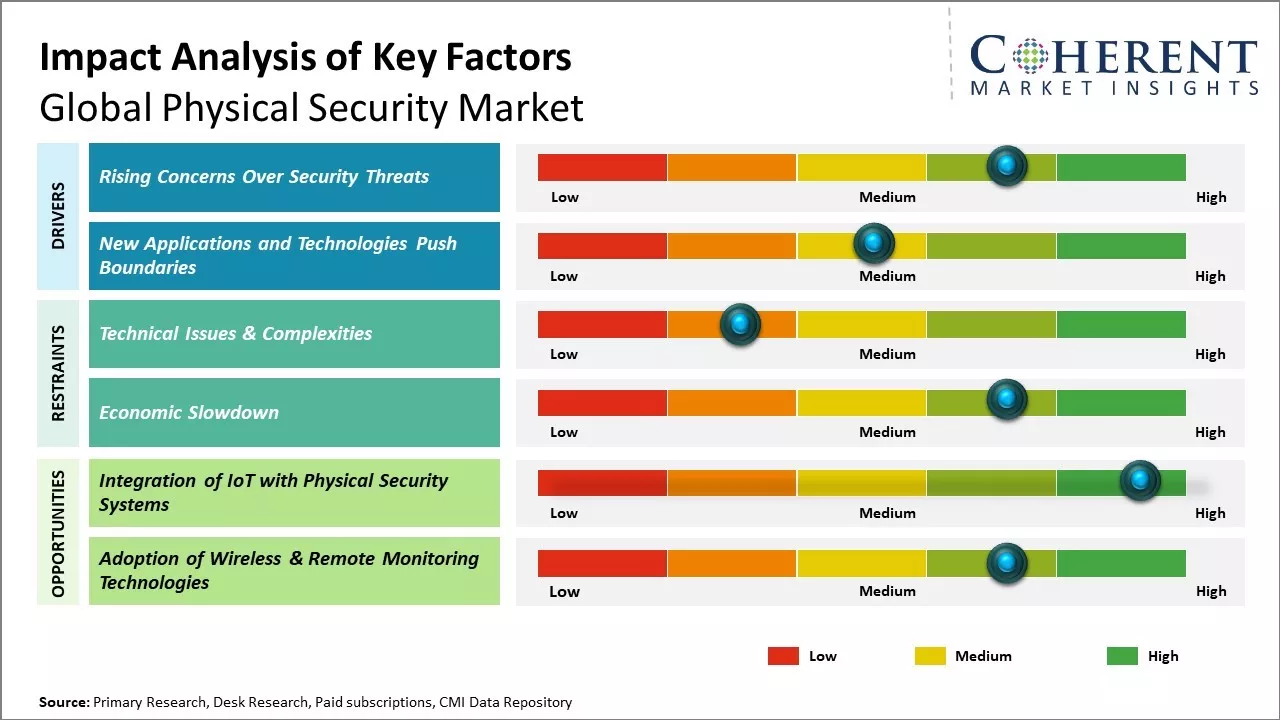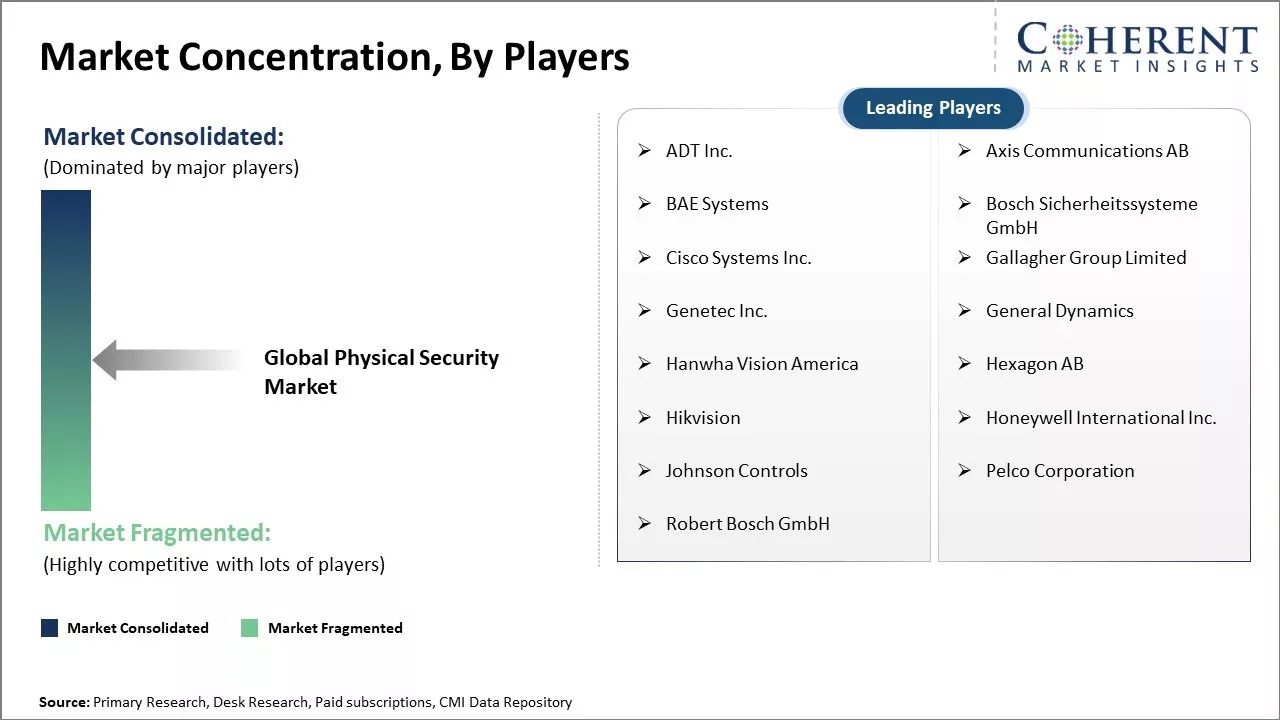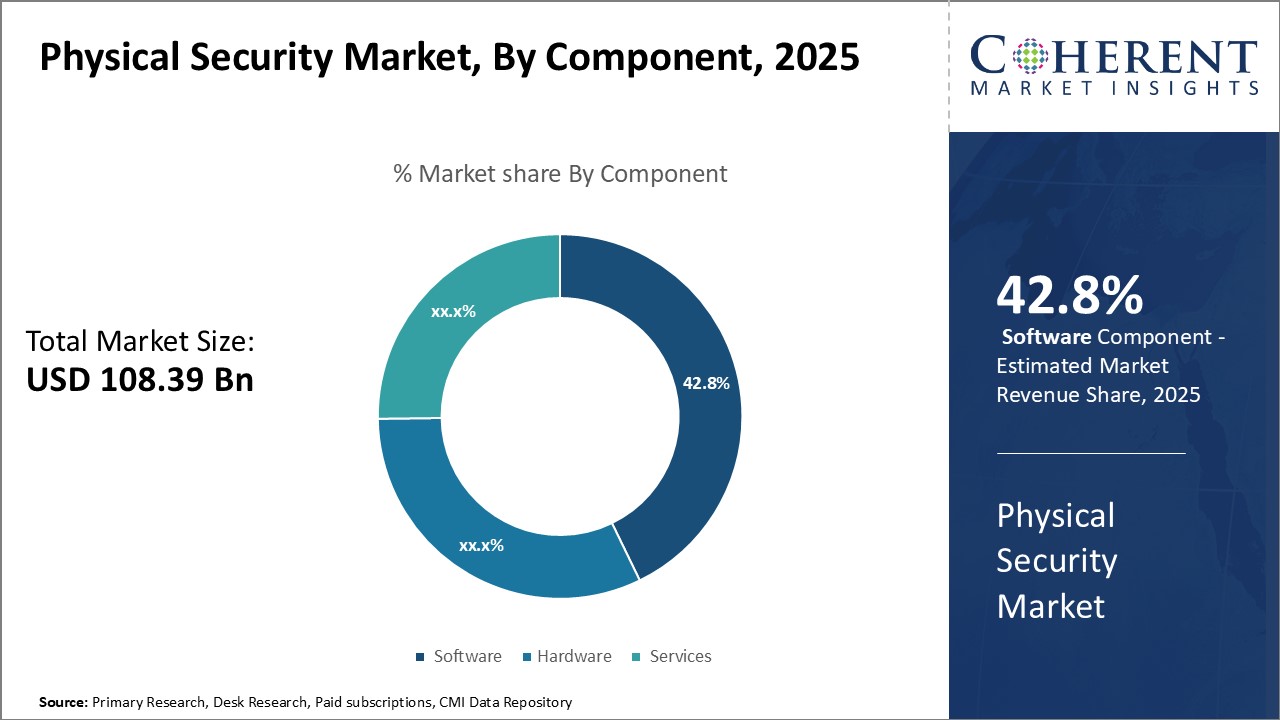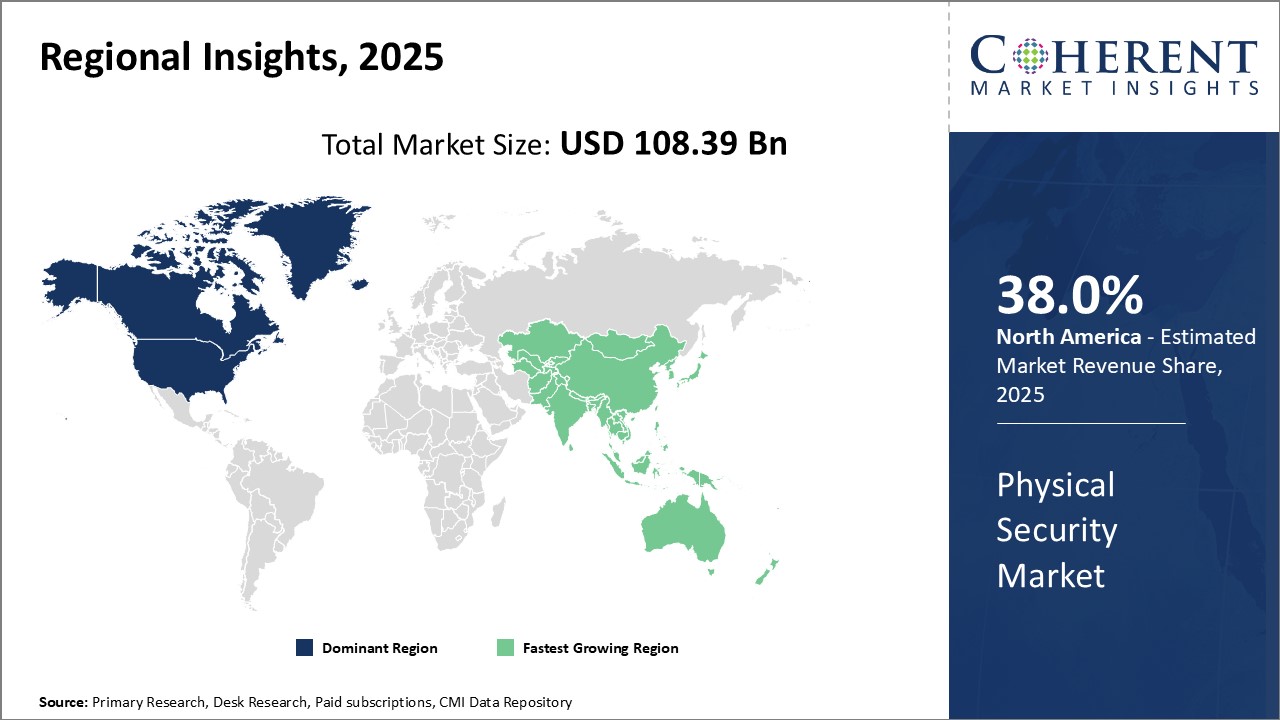Global physical security market is estimated to be valued at US$ 108.39 Bn in 2025 and is expected to reach US$ 150.60 Bn by 2032, exhibiting a compound annual growth rate (CAGR) of 4.8% from 2025 to 2032. Physical security involves protecting personnel, facilities, infrastructure and assets from various threats through integrated systems, and this boosts demand for physical security solutions across different industries globally.

Discover market dynamics shaping the industry: Download Free Sample
Key factors such as rising crime rates, increasing incidences of terror attacks and growing focus on safety are compelling governments and private organizations to strengthen their security infrastructure. Increasing digitalization and growing penetration of internet of things enables integration of various physical security components such as access control systems, video management systems and others. This can boost demand for advanced physical security solutions in the near future.
Rising Concerns Over Security Threats
With the increasing complexity of security challenges, concerns regarding threats to both public and private infrastructure have escalated significantly. Issues such as terrorism, extremism, cybercrime, and mass shootings have surged globally, prompting many developed nations to remain vigilant and implement proactive measures to enhance their defenses against potential incidents. This heightened awareness has brought physical security to the forefront, making robust security systems essential rather than optional.
Both government and private sectors are now prioritizing the integration of analog and digital technologies to secure borders and protect internal assets and personnel. The adoption of advanced technologies in video surveillance, access control, perimeter intrusion detection, and screening is being aggressively pursued. Continuous security audits and upgrades to existing infrastructure are driving increased business for security solutions providers.

Get actionable strategies to beat competition: Download Free Sample
New Applications and Technologies Push Boundaries
Due to rising security needs, the physical security landscape is witnessing major shifts due to technological innovations. Emerging domains like smart cities, IoT, AI and analytics are opening up whole new vistas for security applications that were hitherto unexplored. Advanced video analytics, biometric authentication, drone & robotics, unmanned vehicle perimeter control, and others are empowering security deployments. Even conventional security systems are undergoing changes with integration of IT/OT convergence, interoperable solutions, cloud-based centralized management and predictive insights. These new solutions are finding applications beyond the traditional sectors of government, infrastructure and enterprises into diverse domains like transportation, logistics, manufacturing, healthcare, educational institutes and other. The capabilities these bring to deliver contactless and remote security operations while optimizing resources are proving highly valuable especially amid the current pandemic situation. With innovation poised to drive the physical security market, there has been increase in investments to develop next generation security technologies.
Key Takeaways from Analyst:
Global physical security market growth is driven by rising crime rates and terror threats across various regions. Growing need to safeguard people and infrastructure such as government buildings, commercial spaces, residential complexes and critical infrastructure can boost demand for physical security solutions. North America currently dominates the market, however, Asia Pacific is expected to be the fastest growing region in the near future.
The market is characterized by continuous technology advancements which have transitioned it from a hardware-centric to a software-defined model. Adoption of IoT, AI and video analytics helps organizations move beyond a perimeter-based approach to a comprehensive risk management strategy. However, budget constraints can hamper the market growth, especially in developing economies. Multi-application solutions offering convenience and cost savings can help to overcome this restraint.
Growing smart city initiatives focusing on public safety through integrated command centers can offer lucrative opportunities.
Market Challenges: Technical Issues & Complexities
Technical issues and complexities can hamper the global physical security market growth. Increasing sophistication and advancement of security threats have made it quite difficult for traditional security systems to handle the new and emerging dangers. Legacy security systems that many organizations still rely on are struggling to integrate with newer technologies and are unable to support advanced features. This disconnects between older and newer platforms can create vulnerabilities and limits the effectiveness of security implementations.
Upgrading aging infrastructure and integrating disparate systems is a costly and time-intensive endeavour that many can deter many smaller organizations lacking resources. Physical security now encompasses a wide variety of solutions like video surveillance cameras, access control readers, intrusion alarms, and identity management. However, getting all these different components, some outdated, from multiple vendors to seamlessly work together has become a daunting task. The lack of common communication protocols and data standards between solutions hampers their interoperability. Organizations spend considerable money and manhours to customize limited integrations between systems instead of having out-of-the-box functionality.
As security moves towards more intelligent, data-driven approaches, the demand for analytics and artificial intelligence is also growing. But integrating newer video analytics and AI-based innovations into legacy video management software requires renovating the platforms. Limited processing power and storage capabilities of old systems restrict their ability to support advanced analytics. This prevents organizations from leveraging the full benefits of new technologies like wireless cameras, deep learning, and automatic license plate recognition.
Market Opportunities: Integration of IoT with Physical Security Systems
The integration of Internet of Things (IoT) technology with physical security systems can provide significant opportunities for growth of global physical security market. IoT enables physical security devices like cameras, sensors and access control systems to be connected and exchange data over a network. This facilitates remote monitoring of premises from any location. Many organizations are adopting hybrid video surveillance systems that utilize IP cameras with features like auto-triggering, facial recognition and license plate reading. The data collected from these IoT devices can be analyzed using artificial intelligence and machine learning tools to gain valuable insights.

Discover high revenue pocket segments and roadmap to it: Download Free Sample
By Component- Technologies Enabling Digital Transformation Boosts Software Demand
In terms of component, software segment is estimated to contribute the highest market share of 42.8% in 2025, owing to rising utilization of advanced technologies. Physical security needs are continuously evolving as new software solutions tackle emerging challenges through technologies like IoT, analytics and automation. Cloud-based video surveillance software that leverages AI for facial recognition, object detection and alerts witness increased adoption across industries. Access control systems have also become vastly intelligent with identity management platforms that integrate various credential types seamlessly. Physical security strategies are pivoting towards predictive analysis of risks and behaviors through data captured by a growing number of IP cameras and sensors. Software solutions for centralized monitoring and command centers play a crucial role in enabling this transformation. Their abilities to collect, process and distribute valuable insights are helping organizations strengthen security postures with minimal human intervention. As digitization further blurs boundaries between the physical and digital worlds, there will be huge demand for advanced software that powers new technology-driven security paradigms.
Insights By Enterprise Size, Comprehensive Solutions Meet Expanding Requirements of Large Enterprises
In terms of enterprise size, large enterprises segment is estimated to contribute the highest market share of 57.6% in 2025, due to their broad and complex security needs. Large multi-national corporations with extensive global footprints and asset bases require highly customized and scalable solutions that integrate various systems on a unified platform. These need comprehensive offerings that can address simultaneously requirements across multiple facilities, regions and business units. Large enterprises requires thorough customization as per their standard operating procedures and protocols. This has made physical security vendors to focus on developing modular and centralized solutions comprising of converged infrastructure, applications and management consoles. Comprehensive solutions help streamline operations, realize cost benefits through centralized administration and provide real-time visibility and response across vast operational areas. These also help future-proof investments with capabilities for easy expansion and integration of additional systems. Owing to their vast scope and resources, large enterprises are actively leveraging such advanced physical security portfolios to strengthen control and optimize oversight of security operations on a global scale.
Insights By End User- Governments Prioritize Security of Critical Infrastructure and Public Places
In terms of end user, government segment is estimated to contribute the highest market share of 38.9% in 2025, due to heightened focus on security of public utilities and places. Governments worldwide consider it a top priority to safeguard citizens and ensure security of critical infrastructure, transportation hubs, landmarks and buildings. These are making significant investments in deploying centralized surveillance networks, access controls, intrusion detection along with command-and-control software across various public premises. Mass surveillance systems along with analytics are being installed in high footfall areas for round-the-clock monitoring and situational awareness. Transportation authorities are also equipping ports, airports and metro stations with advanced video management, screening and alarming solutions. Governments are procuring integrated, user-friendly security suites tailored for command room operations to achieve streamlined protection of public spaces and national assets on a large scale. Their growing security expenditure can drive the segment growth.

Need a Different Region or Segment? Download Free Sample
North America dominates the global physical security market with an estimated market share of 38.0% in 2025. Led by the U.S., the region accounts for around 40.5% of the worldwide demand for physical security systems and services. This can be attributed to factors like strong presence of global players and technology leaders based in the U.S. and Canada who have built robust supply chains and delivery networks within the region. High enterprise spending on security in North America due to constant innovation and upgrades of existing infrastructure can also drive the market growth. Stringent regulations and compliance requirements around critical infrastructure protection and law enforcement modernization boosts demand.
Asia Pacific region has emerged as the fastest growing market for physical security. Led by countries like China, India, Japan and South Korea, APAC is witnessing exponential urbanization that leads to increased spending on safety, surveillance and monitoring across residential and commercial establishments. Increasing instances of terrorism and regional conflicts have accelerated the adoption of security system across governmental agencies, public venues and transportation centers.
Homegrown manufacturers from China have made significant investments in R&D and now compete aggressively on global Export of cost-effective IP cameras, video management systems and access control machines from the region have disrupted traditional pricing models. For external suppliers, the real attraction lies in establishing design, integration and support centres to capitalize on the untapped massive demand from private and public local clients. If the emerging economies in APAC continue their infrastructure-led growth trajectory supported by favourable regulations, the region will surpass North America as the premier marketplace for physical security within this decade.
Physical Security Market Report Coverage
| Report Coverage | Details | ||
|---|---|---|---|
| Base Year: | 2024 | Market Size in 2025: | USD 108.39 Bn |
| Historical Data for: | 2020 To 2024 | Forecast Period: | 2025 To 2032 |
| Forecast Period 2025 to 2032 CAGR: | 4.8% | 2032 Value Projection: | USD 150.60 Bn |
| Geographies covered: |
|
||
| Segments covered: |
|
||
| Companies covered: |
ADT Inc., Axis Communications AB, BAE Systems, Bosch Sicherheitssysteme GmbH, Cisco Systems Inc., Gallagher Group Limited, Genetec Inc., General Dynamics, Hanwha Vision America, Hexagon AB, Hikvision, Honeywell International Inc., Johnson Controls, Pelco Corporation, Robert Bosch GmbH |
||
| Growth Drivers: |
|
||
| Restraints & Challenges: |
|
||
Uncover macros and micros vetted on 75+ parameters: Get instant access to report
Share
Share
About Author
Monica Shevgan has 9+ years of experience in market research and business consulting driving client-centric product delivery of the Information and Communication Technology (ICT) team, enhancing client experiences, and shaping business strategy for optimal outcomes. Passionate about client success.
Missing comfort of reading report in your local language? Find your preferred language :
Transform your Strategy with Exclusive Trending Reports :
Frequently Asked Questions
Joining thousands of companies around the world committed to making the Excellent Business Solutions.
View All Our Clients